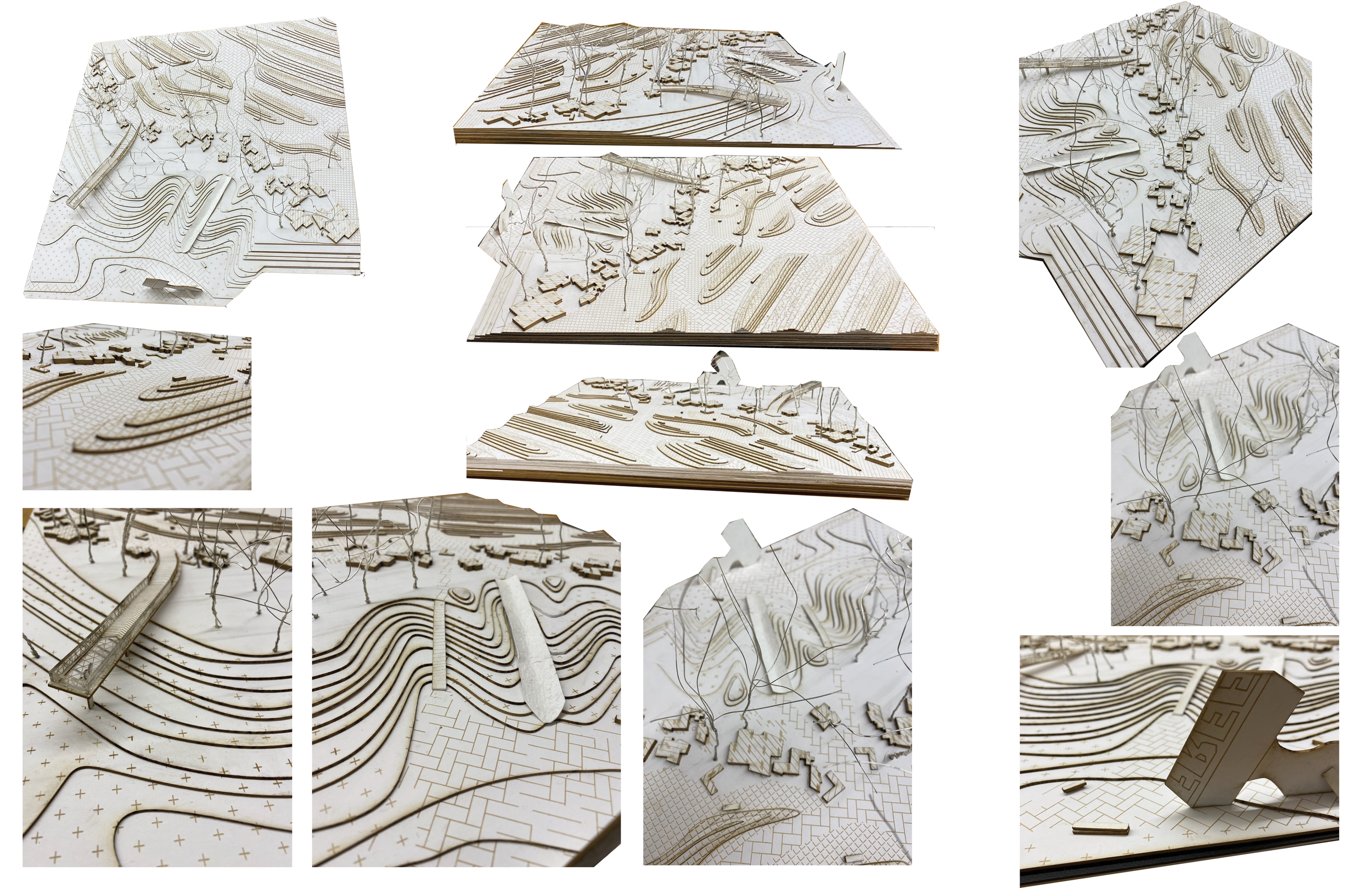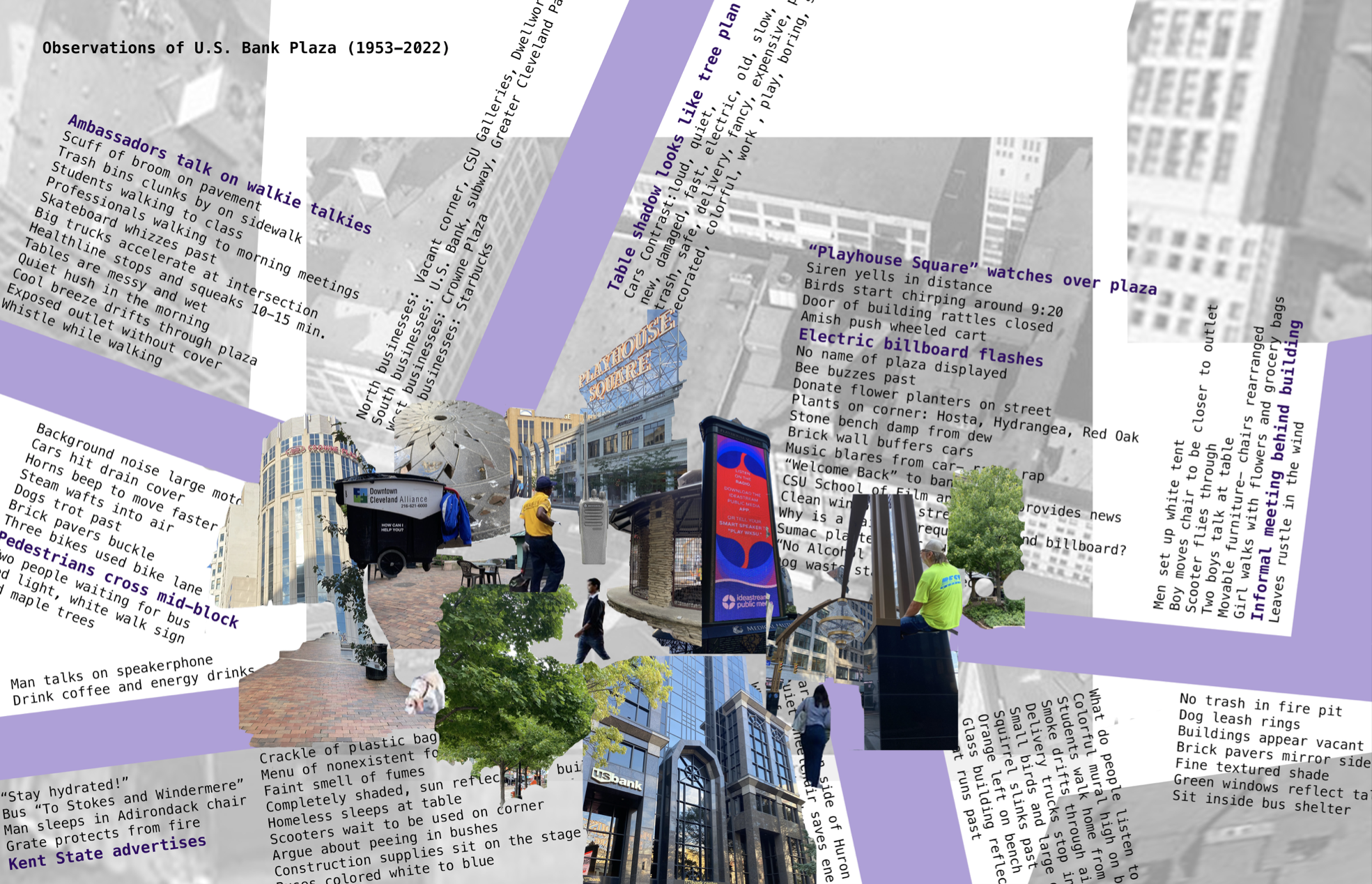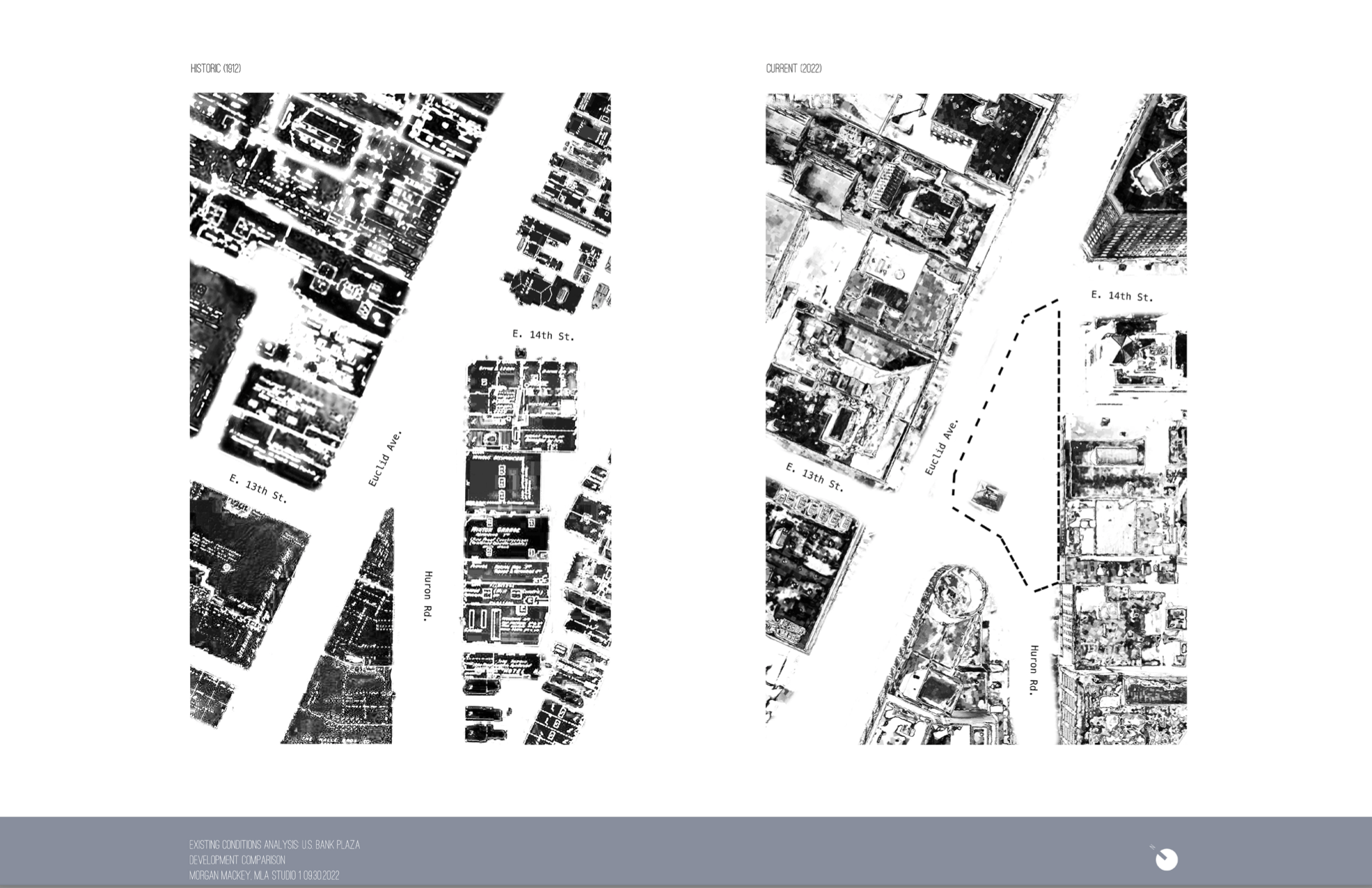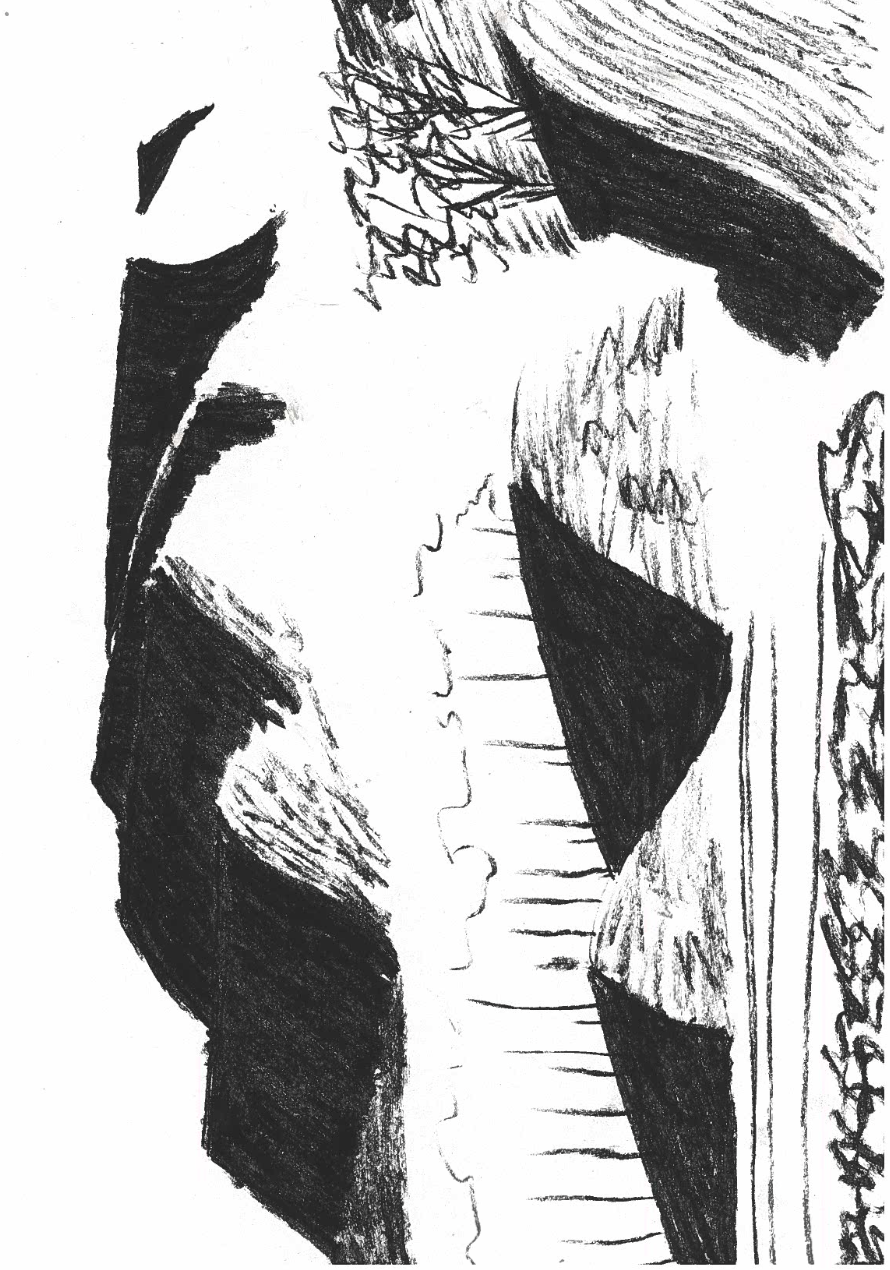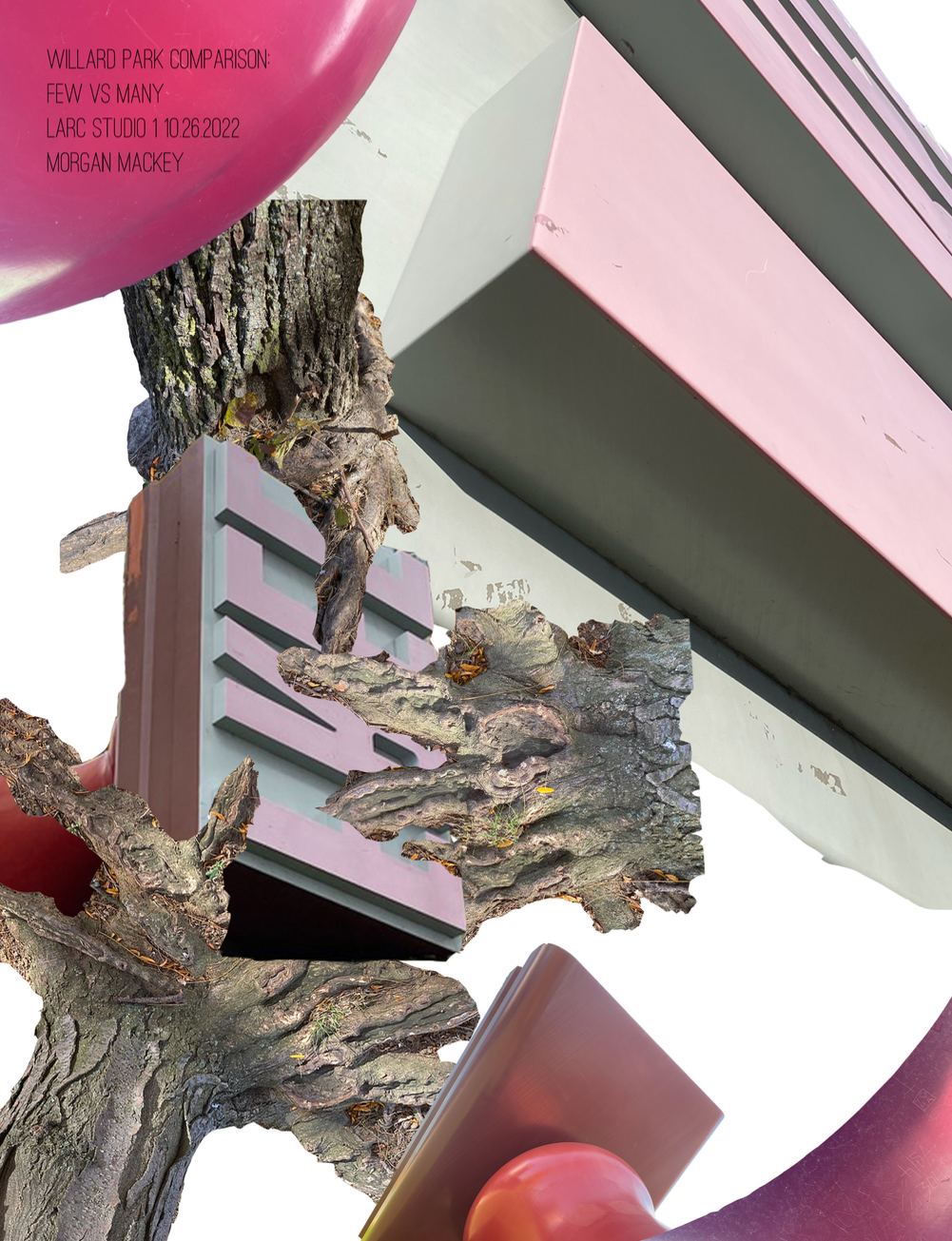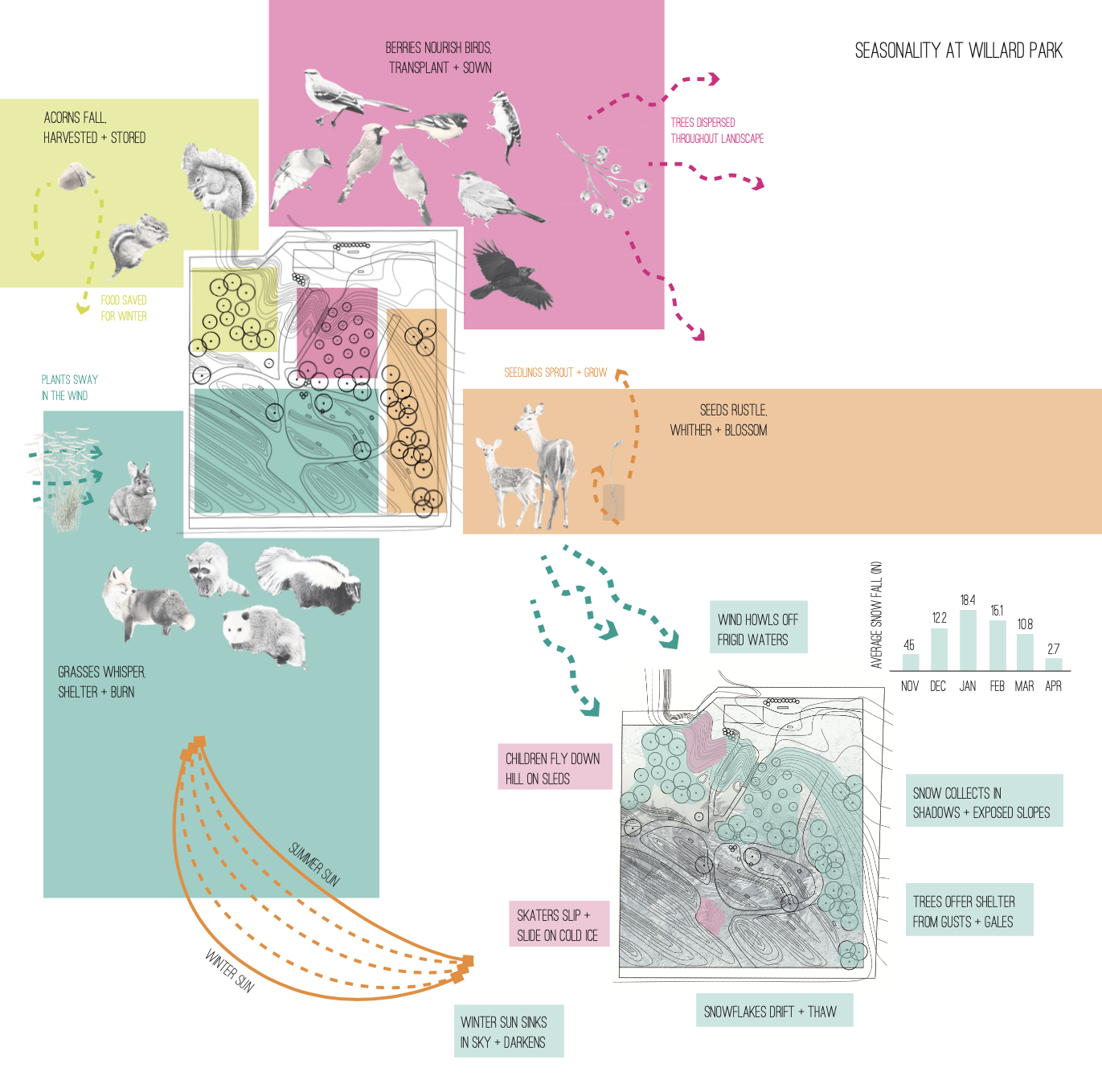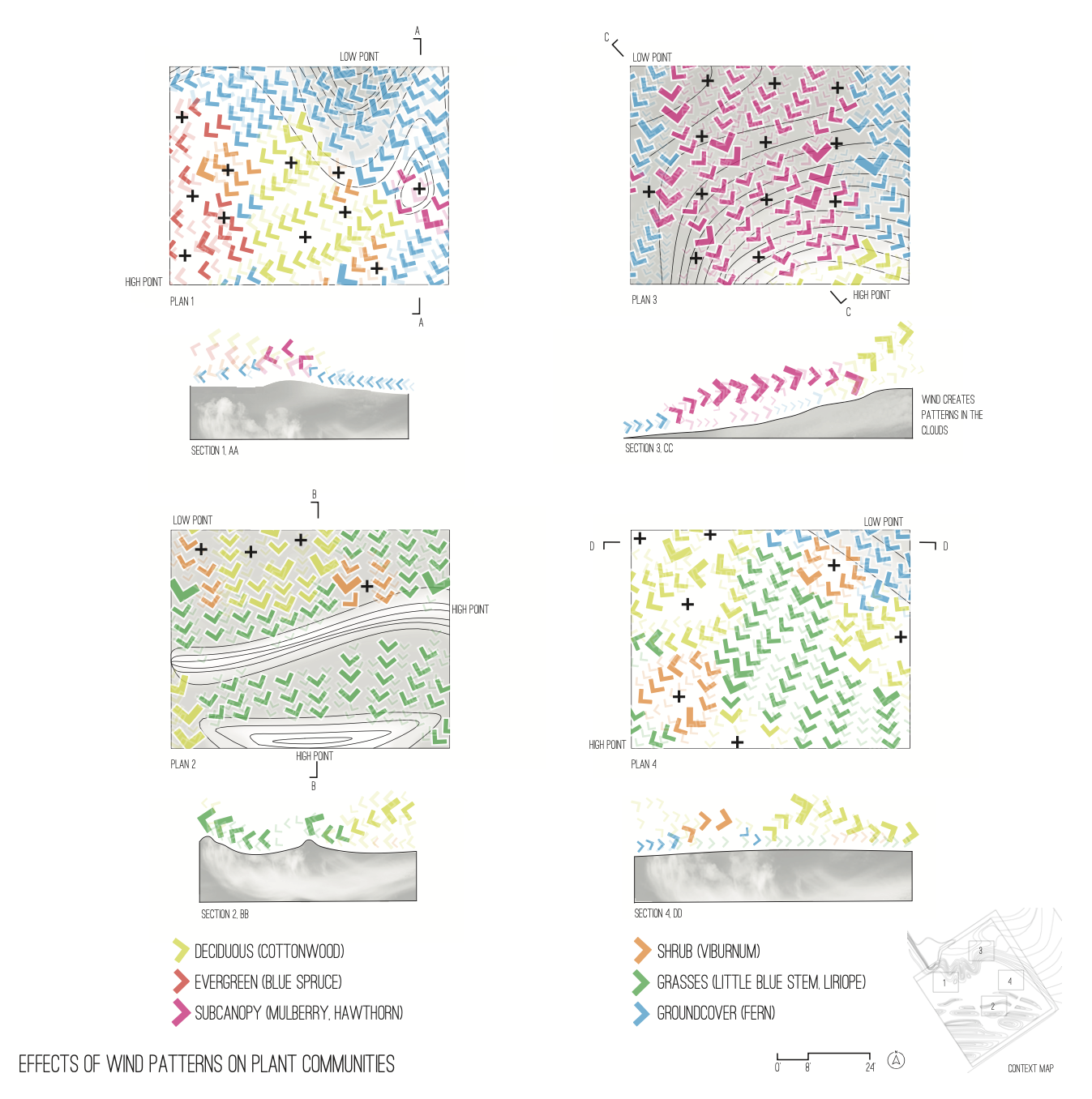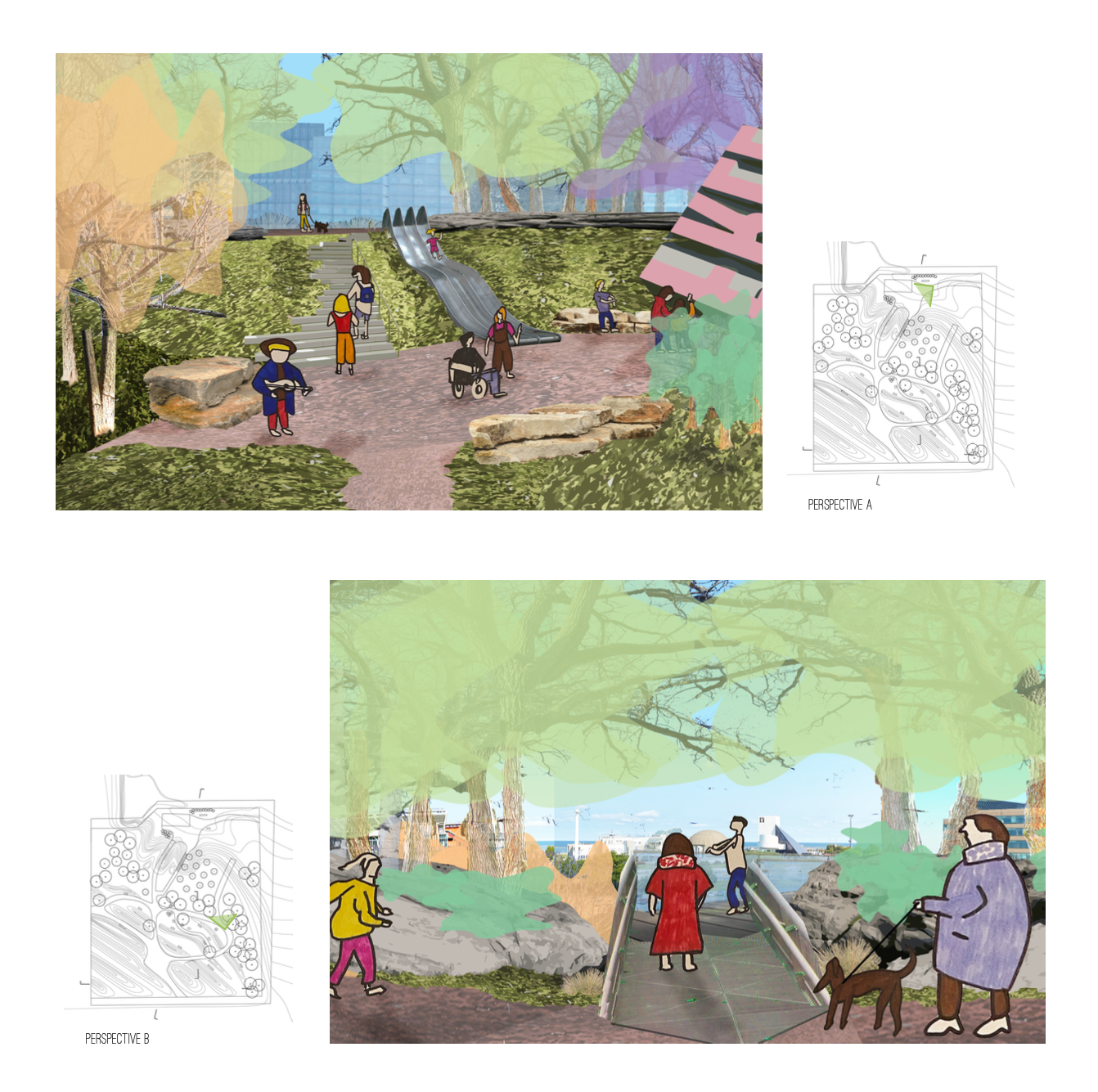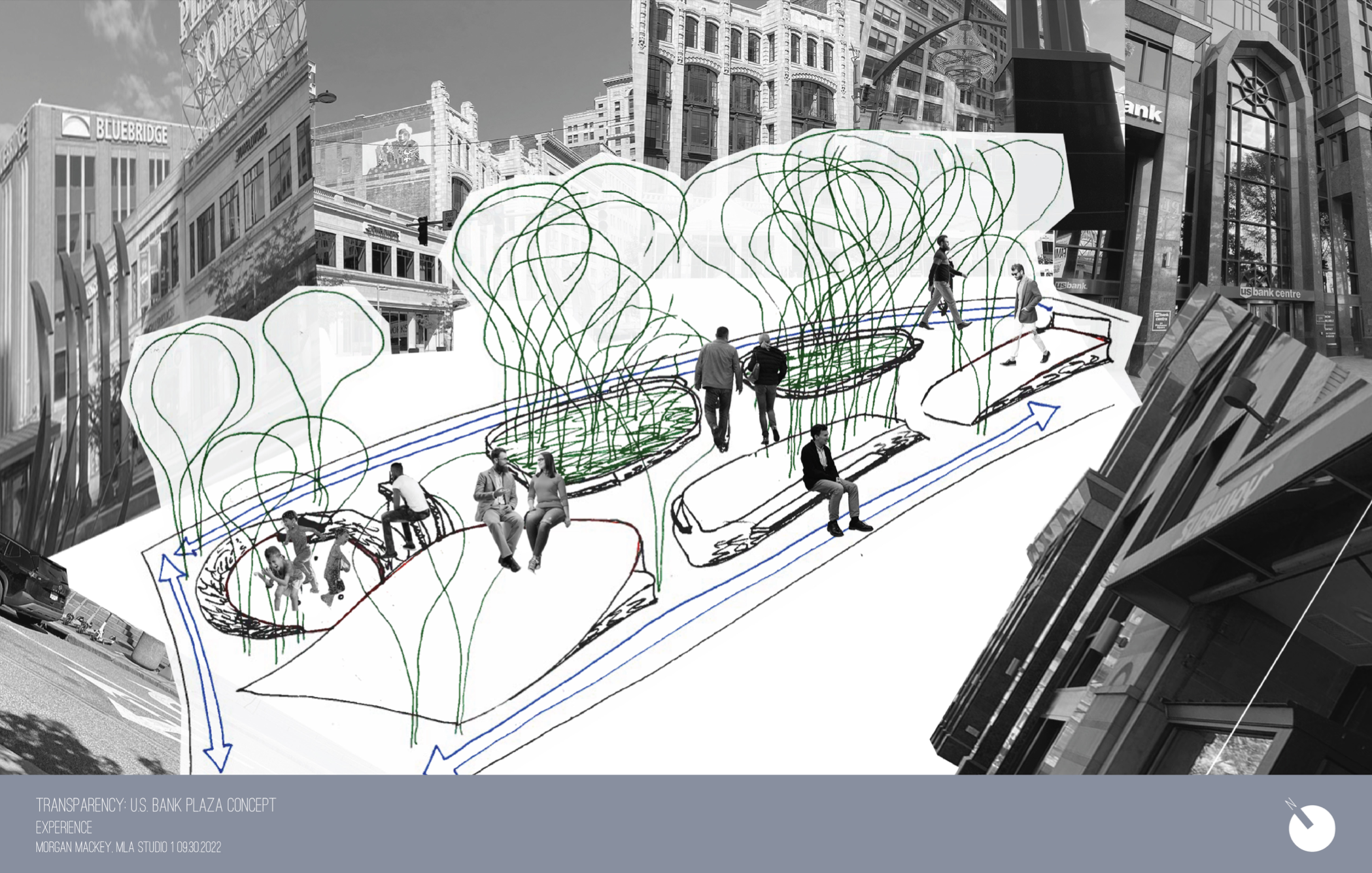Cat Marshall
This course introduces the basics of idea formation that develop through the design method and graphic communication for the discipline of landscape architecture. Emphasis is placed on the engagement of processes that initiate and advance creativity through idea formation, conceptualization and visualization. Drawing, illustrating, modeling, and forms of photography will be use to communicate ideas that create order and space in the landscape. Students will explore the course material through a process of engagement, production, proposal, review and refinement. A focus on the creation of gardens will guide exploration The First Year of studio: Groundwork – Introduces base knowledge of landscape architecture and create a foundation for design and professional awareness. The objective for this year is to acquire fundamental knowledge through an introduction to design, history, theory, visualization, plants, ecology (employing precedents), graphics, modeling, field observations, and design process exploration This Landscape Architecture Design Studio 01 Projects include: research, case studies, site analysis, design making processes, and one site design project.
Morgan Mackey
Willard Park: Landform as Art
Located in the northern portion of downtown Cleveland with clear views of Lake Erie, Willard Park connects the city’s most popular attractions, including the Rock and Roll Hall of Fame, Great Lakes Science Center, and Browns Stadium. The park is also within walking distance to the Mall, which connects to the Convention Center, Library, and Public Square. The park is named after Archibald Willard, a local painter whose work is displayed at the neighboring City Hall. The existing site includes one diagonal path connecting a parking garage to the intersection of Lakeside Avenue and East 9th Street, memorials to individuals and groups in Cleveland, and a small rain garden. A popular attraction at the park is the Free Stamp by Claude Oldenburg, which faces Lakeside but lacks any access paths. While the park acts as a gathering space during some public events, its main use is circulation. The park offers an opportunity to connect to nearby attractions and encourage visitors to learn more about the area’s history. In the design, existing memorials are placed along a curving path with additional signage, nestled among prairie grasses. The Free Stamp is placed in a play area with a slide and grid of trees for children to enjoy. To anchor the park to the region, boulders and Cottonwoods reflect the local shoreline, with an elevated boardwalk to capitalize on clear views of the lake. Rolling lawns provides a flexible space for gathering and invites pedestrians into the park from the city. This project uses landforms, viewsheds, and creative programming to create a unique and memorable experience for users, including those that use the park daily and those visiting Cleveland.
